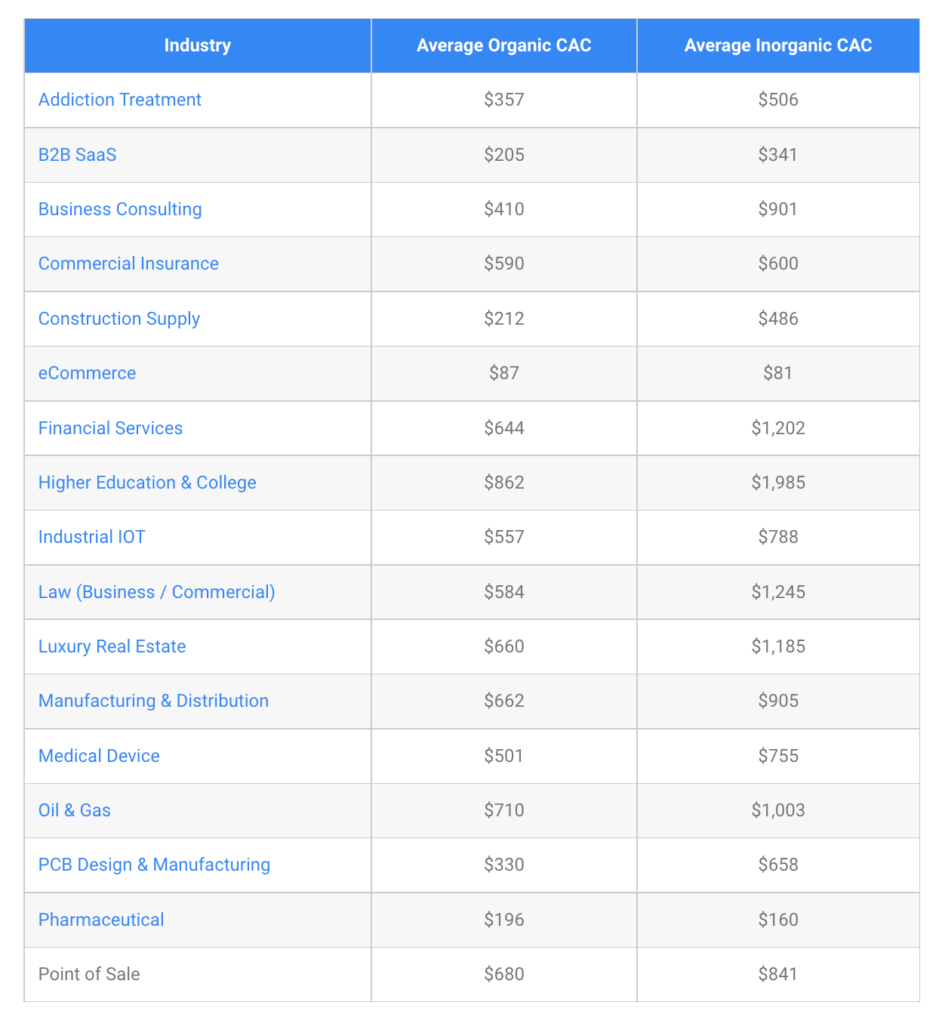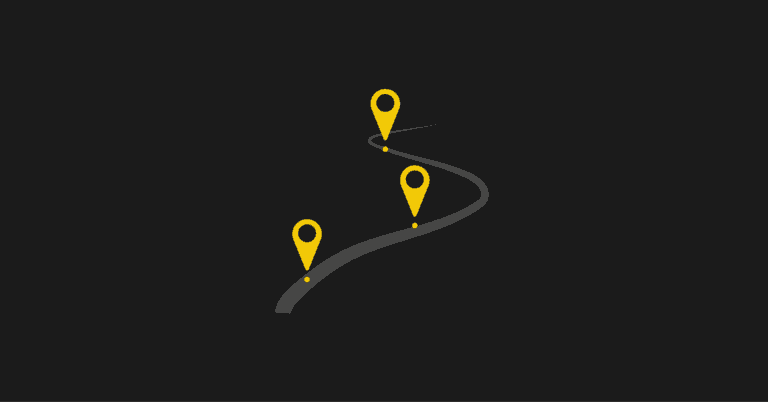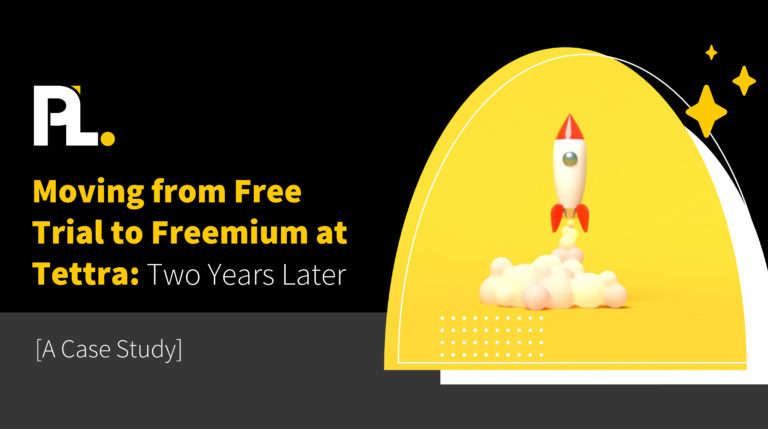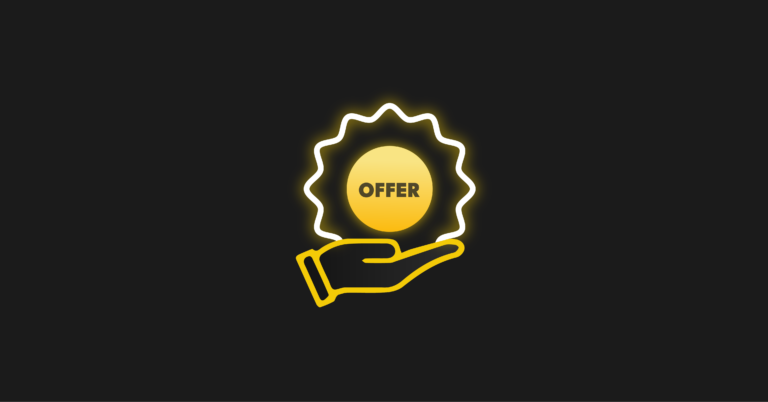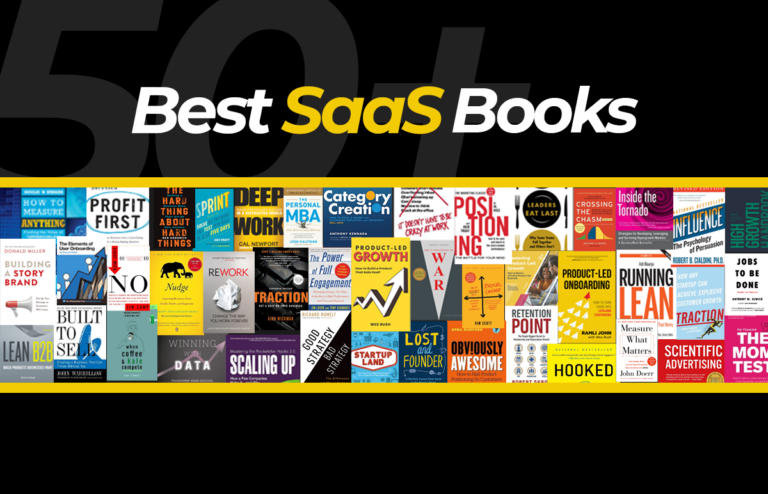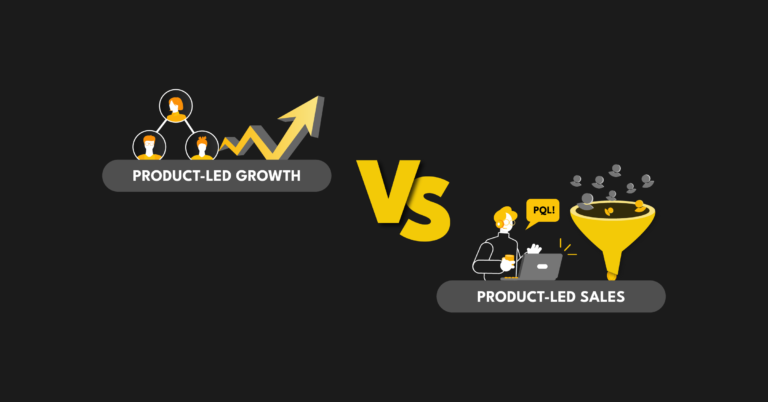It’s a tough time in tech right now, with many companies contracting after a two-year run of high growth and sales. Companies need to double down on efficiency to wait out the next wave of growth, which is exactly what product-led growth does.
If you are reading this, you probably know one of the biggest obstacles in switching to a product-led growth strategy is knowing where and how to start.
Here are six steps you can take to form a team, capture some quick wins, and use the momentum to gain buy-in from the C-Suite. While there are more than six steps in the entire transition, these will give you an actionable plan to form the base for a successful shift.
Specifically:
- How to create an internal cultural shift
- How to assemble a product-led growth team
- How to create a unified definition of success
- How to build momentum with early wins
- How to experiment and learn
- How to scale your PLG operations
But before we get started, let's set the record straight about why you should make the switch.
Why Is PLG so Hot Right Now?
A lot has changed since product-led growth came into existence in 2016. One of the biggest catalysts for change was the pandemic.
The pandemic did two things:
First: Businesses had to move to ecommerce or die, and the everyday consumer, regardless of background, got comfortable and settled into ordering almost everything online.
Ecommerce is the father of product-led as it gave users clear expectations of how an ecommerce site should run. Using those expectations as a base, product-led has shown the world the beauty of trying a product before buying it. The pandemic created a necessity that accelerated the rate of companies adopting the product-led strategy. And now, user response has shown it's not just the preferred way of buying a product (for both B2B and B2C); it’s expected.
Claudiu Murariu, founder of InnerTrends
Second: The entire workforce got a crash course in modern technology, and software became the backbone of the virtual office. During this period, the virtual model was adopted, and millions of people who had never worked remotely got to try it out.
The fascinating part is when businesses tried to revert to the standard presential model, employees resigned (and are still resigning) in droves, forcing many companies to go back to remote or settle on a hybrid model. This means we are moving past the trend point and settling into a new way of working.
If these facts aren’t enough, here are four more reasons why people are ditching the traditional sales-led model and becoming product-led.
#1. The Market Is Saturated With Similar Products
If you’re swimming in a red ocean, many companies are making the same product as you, and it may be time to adjust your strategy.
PLG is fast and agile and allows companies to iterate on their product to create a unique value for their users while differentiating themselves from their competitors.
#2. Sales Growth Is Stagnating
The data is in. Product-led companies scale faster than sales-led.
But why?
PLG guru Blake Bartlett tells us, “The End User Era is upon us, but many software companies are still relying on decades-old advice about sales and marketing-led growth models that are human-dependent and untenable in the current market environment.”
We concur, Blake!
Elements of the human-dependent, sales-led model make the machine move much slower. We live in an age where users are comfortable navigating online platforms independently, and traditional sales-led models don’t capitalize on that.
With a solid UX flow, you can help deliver a fast value proposition to your users to quickly bring them to their “Aha!” Moment and shorten the sales cycle.
#3. Customer Acquisition Costs Are High
While onboarding new users is the goal, many companies experience a negative ROI or razor-thin profit margins with paid advertising. Below is an eye-opening chart of the average Customer Acquisition Cost (CAC) per industry.
#4. PLG Creates a Moat Around Your Business
One of the unintended benefits of product-led growth is that it builds a protective moat around your business that protects against competitors and market changes.
Here are the three ways it helps build a moat:
- Faster sales cycles: By having your prospects onboard themselves, you can significantly reduce your prospect’s time-to-value and sales cycle. Once people experience the value of your product, the next logical thing to do is upgrade.
- High revenue-per-employee (RPE): Software was always built to scale well, but with a product-led approach, you can do more with fewer people on your team. Less hand-holding means higher profit margins per customer.
- Better user experience: Since your product is built for people to onboard themselves, people can experience meaningful value in your product without any hand-holding.
So now that we’ve covered the “why,” let's dig into the “how.”
The 6-Steps to Transition to a Product-Led Company
By now, you should better understand the benefits of a product-led growth (PLG) model. Collectively it’s a big overhaul of how a team relates to sales, marketing, and what they deem a success.
Here are six steps to help you gain traction, build momentum and create excitement around product-led growth in your company. While there are more than these six steps to become fully product-led (as the strategy varies per user type and product), it should be enough to show the potential for your company.
Step One: Introduce an Internal Cultural Shift
One of the main reasons companies have problems with their PLG strategy is they either lack cross-collaboration within their teams or stakeholder buy-in.
A PLG cultural shift requires everyone to consider how the strategy changes their traditional role in a company.
According to product-led guru Breezy Beaumont, Head of Growth & Marketing at Correlated, Product-led growth is a company-wide strategy, and it cannot live in a silo in marketing or product – it changes the way you market, onboard, and sell your product.
Here’s a brief rundown of some of the changes that happen across various roles:
- Sales teams: The role shifts to being more product-minded and supportive. Sales are integral in speeding up a new user's time-to-value. Unfortunately, more often than not, they aren’t brought in, which can cause organizational misalignment.
- Marketing: It’s not about being as loud as possible to attract everyone but connecting deeply with the right user segment that will value your product marketing. This role is focused on product signups and product virality on top of their existing functions.
- Operations: In PLG, it’s beyond creating operational systems and extends to helping the team automate and create systems to collate, analyze, and read data faster. This keeps your company agile and users delighted.
- Product: The product team is responsible for creating a product that solves real customer problems, which requires much more collaboration with marketing, sales, and customer success.
- Customer Success: Serves the crucial function of driving value for users. This means they will have much more crossover with Sales.
- C-Suite: The major cultural shift starts with the C-Suite. Product success is not measured by outputs but by outcomes. This means focusing on specific metrics that help drive growth and retention, outcomes that take time to show up in the bottom line.
- Engineers & Developers: Need to dial in their UX skills. Having a good flow for onboarding is critical to a product-led growth strategy. They are closer to the customer in this environment, not siloed with the product.
How Do You Communicate This Change to Your Employees?
Knowing the best ways to communicate what this means can be a challenge. So here are three ways you can explain the differences between a traditional sales-led mindset and a product-led mindset.
1. Provide tangible examples of how the strategy worked for other companies.
- A product-led growth strategy was the cornerstone of growth for companies like Zoom, Canva, Calendly, and DropBox, to name a few. They grew quickly and with less capital.
2. Show product-led growth principles in practice. How are you supporting end-user success?
- Canva has a Freemium Product that allows a new user to experience all the functionality of their product. While they’ve limited things such as templates and certain designs to the Premium Product, you can still create with their Freemium Product.
Check out 21 product-led characteristics that many top product-led companies have in common.
3. Outline the challenges that will arise with the transition and how to overcome them.
From our community, we’ve noticed these top four problems, starting with the most severe.
- Intradepartmenal cross-collaboration. The strategy can’t be siled in Marketing and Product. Surveys show that only 40% of Sales are being brought in and 68% of Customer Success. Both of these departments are instrumental in speeding up a user's time-to-value.
- Learning what metrics to track. The focus needs to shift from outputs to outcomes. Are your users finding success? Or are they experiencing value in your product? Decide which metrics will help you track that and make sure each team is aligned around the same metric. This is different for each company and requires research.
- Monetization. What should you make free? Should you make a Freemium Product? How do you price your Premium Product? For many companies, this is a major point of decision analysis paralysis.
- C-Suite buy-in. Execs need to understand the potential and be willing to shift their focus from outputs to outcomes. Don’t tell them the potential. Show them the potential with simple experiments to help build persuasion with data.
The reality is that not everyone will be on-board from the get-go. But you can set the stage for success by:
- Finding and leveraging your early adopters who are excited about the idea because enthusiasm is contagious.
- Don’t explain, but show the clear purpose of the strategy for your company.
- Making sure everyone understands their role and function in executing a PLG strategy is the first step to getting buy-in from all departments.
Review Processes That May Hinder a PLG Strategy
Some hurdles are bigger than others, and typically traditional ideas bleed into processes that may actually work against a product-led growth strategy.
“When I joined Data.ai, the biggest surprise was the Product team operated in a development cycle that required a long planning phase, that spanned an entire quarter. This is a problem for product-led growth because it’s all about small experiments, rapid iteration, and failing quickly.
Jordan Callister, Growth Product Manager, Data.ai
I knew we couldn’t make as much progress if it took 3-6 months just to launch an experiment. So now, we’re exploring having either a Kanban approach or having a single dedicated Growth Team that works 100% on growth initiatives. It’s still a work in progress, but the initial approach was a hurdle we needed to clear to become a nimble, product-led company.”
Review current procedures and processes to ensure that it provides the agility and speed your team needs to fail efficiently.
Here’s how one product-led growth leader introduced the concept to his team and got them on board.
C-Suite Blocks
The number one reason this strategy doesn’t work is the lack of true company buy-in.
When considering the resources needed to switch from sales-led to product-led, a 2% increase in conversions will cover the initial investment. The secondary benefits of the product-led growth strategy (lower acquisition costs and less manpower) will continue to pad the bottom line. So, if your company says they’re invested buy they aren’t willing to invest in the switch. It’s time to question if you really have buy-in from the top.
Wes Bush, Founder of ProductLed
If this sounds familiar, it may be time to see what you have on hand for some quick wins to show The Suits the strategy's potential.
Get Noticed By C-Suite With This Trick
Breezy Beaumont really showed up for this topic (we love you, girl) and provided a quick way for product-led leaders to get buy-in from the white shirts up top.
This trick works well for companies that can manually get users into their products.
- Add a button to your website that says “Try for Free.”
- Include a form (necessary fields only).
- When users fill out the form, add them to your product.
- Notice where users get stuck and document it all.
- Monitor the volume of folks who chose the “Try for Free” option.
- Use this to build a case for a PLG go-to-market strategy.
- Use what you learned to clean up the onboarding or any other processes.
- Get your team ready for the shift.
Take all your documentation and tell a story (with solid data) to the C-Suite. Show them how you were able to identify pain points and improve the product, increase user volume, and the potential increase for conversions.
Step Two: Assemble a Product-Led Growth Team
It's important to note that even though a company may be product-led, success with PLG is a team sport. You’ll need a team that understands the goal of creating great products that solve real customer problems.
Identify the Missionaries
To start, identify the coworkers most passionate about the product and vision. These individuals will be able to lead change throughout the company and reinforce the efforts of those who are reticent. We like to call them "The Missionaries."
These missionaries can be:
- Engineers, developers, or anyone with strong technical skills.
- People managers: need to understand how important it is for employees to believe in the product.
- Team leaders at every level of your company.
They are the ones that will be the most dedicated to creating great products.
If you're still unsure about who these advocates might be, here are some questions to ask yourself when trying to identify missionaries:
- Do you have employees who come to meetings all excited about your latest features?
- Do they speak of the product as if it was their baby?
- Can they communicate the benefit of their product to someone who hasn't used it?
- Did they switch to your product from another competitor?
Change Your Recruiting Focus
Having a good mix of skillsets within your product-led growth team will empower this division to relate its findings and strategies to each department. And even more importantly, help secure C-Suite buy-in.
Look for these skills in your product-led growth team:
- Customer empathy: You'll need someone who can focus on creating great products for their customers and communicating with them to determine what's working and what isn't.
- Flexibility: A successful product-led growth team member is someone who can change their strategy based on new information. They need to be open to trying out new ideas, even if that means changing an approach they've had success with.
- Strategic thinking: This person needs to be able to help guide your company's product strategy, which means they need to be good at coming up with new ideas and seeing what is most likely to succeed. They'll also need to be flexible enough that they're willing to drop strategies that don't work out.
- Analytical thinking: A person who can separate the signal from the noise in all the data they receive will be invaluable. They should also have good math skills to run numbers independently and confidently speak to stakeholders about their findings.
See how the former Sr. Product Manager at 7Shifts formed his growth team.
Step Three: Define End-User Success
Hey people, I have something hard to tell you. This step starts and ends with quality user research. You can’t believe how many company heads think they are advanced in their PLG journey but still don’t know their user segments.
Knowing your users is a big component of end-user success because what it means to be successful can vary per segment. Once you’ve identified what it means to be successful for each segment, you can then focus on shortening the path to their success.
End-user success is made up of three elements:
- Understand your value.
- Communicate the perceived value of your product.
- Deliver on what you promise.
Using Grammarly as an example, here are five steps to help you better understand your users.
1. Who Is Your User & What Is Their Problem?
Grammarly has helped democratize super-fancy editing programs that were only available for medium to large publishing houses and newspapers. With Grammarly’s tool, anyone with a computer can use its Freemium or Premium product to increase output and create an error-free copy.
This means most users are typically independent contractors or SMBs with a blog site.
Why do users sign up for Grammarly?
- To edit quickly and efficiently.
- To increase quality, copy output.
- To check for plagiarism without tedious searching.
- To be more clear and concise in their writing styles.
- To check the clarity or tone of their text.
Basically, Grammarly helps users level up their communication styles (which have become important in the age of the remote office) and their earning potential.
2. The User Onboarding Journey
Quick win alert!
Understanding the journey will help you understand the pain points in your onboarding process. Creating a smooth flow in your UX will decrease drop-off, and those numbers have the power to dazzle the C-Suite – can I hear you say “buy-in” – shout it out!
Here are four questions to consider for user onboarding improvement.
- Why did your new user sign up?
- Did they accomplish what they wanted to with the signup?
- If not, what prevented them from doing that?
- If yes, what supported that?
Now let's apply that to Grammarly.
Signing Up With Grammarly
- Why did your new user sign up? They had something that needed editing.
- Did they accomplish what they wanted to with the signup? They were able to use the tool on the website platform. No download was needed.
- If not, what prevented them from doing that? There was a delay between the signup and email verification. The email verification creates friction. It may not be necessary friction, and we may lose potential users.
- If yes, what supported that? They used a temporary email address that allowed them to use the product without giving them their real email. Or the risk of SPAM outweighed the benefit of using the tool. They then came back and signed up formally with their real email address.
Below I’ve created an image of Grammarly’s onboarding journey.
Grammarly’s onboarding process was smooth (besides their email verification) and guides the user to experience the tool before any other action.
Before I’m prompted to download or integrate their app, they provide a platform where I can immediately copy and paste my document to experience the tool's value.
Or I could start with a quick tour and install applications and integrations. This flow may be more practical for a user who has done the research and plans on using Grammarly often.
3. Define User Segments & Their Pain Points
This is where you validate any assumptions you may have of your key user base and define their pain points.
But how do you do this?
Get the most extroverted team member that knows how to listen and start talking to your users.
Here are the five people you should talk to:
- New Users
- Churned Users
- Shoppers (Users evaluating your product)
- Active Users
- Inactive Users
Start with your Active Users; it should be fun. Talk to them authentically and casually. It should feel like talking to a neighbor or an acquaintance.
Don’t be a “Lord Business.” Keep it human.
Here are three examples of Grammarly’s active user interviews.
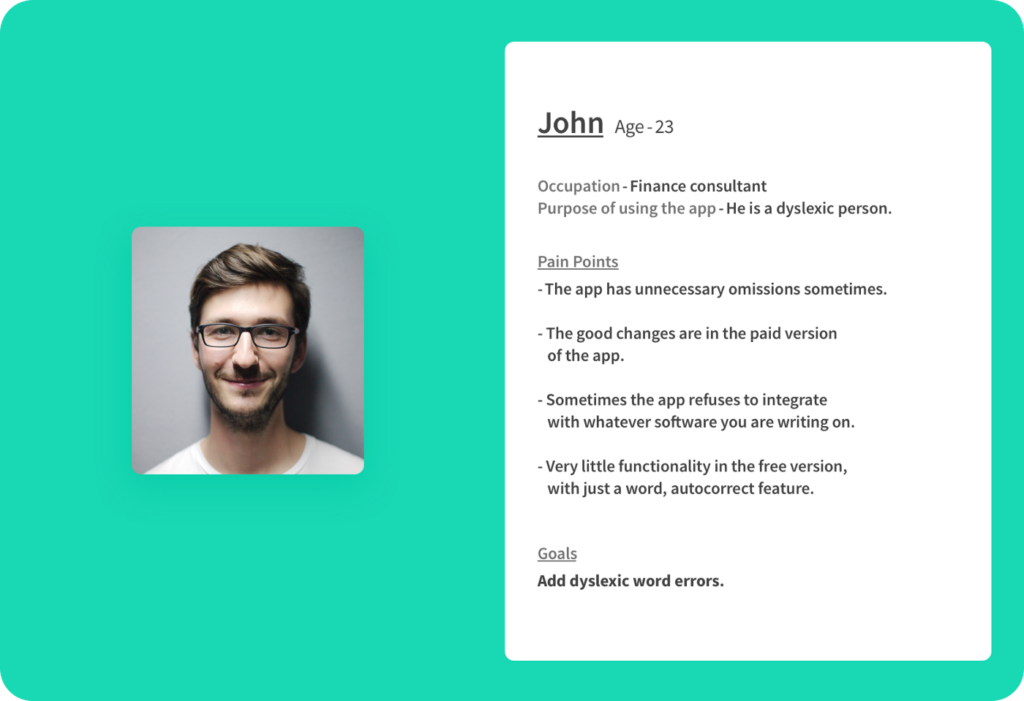
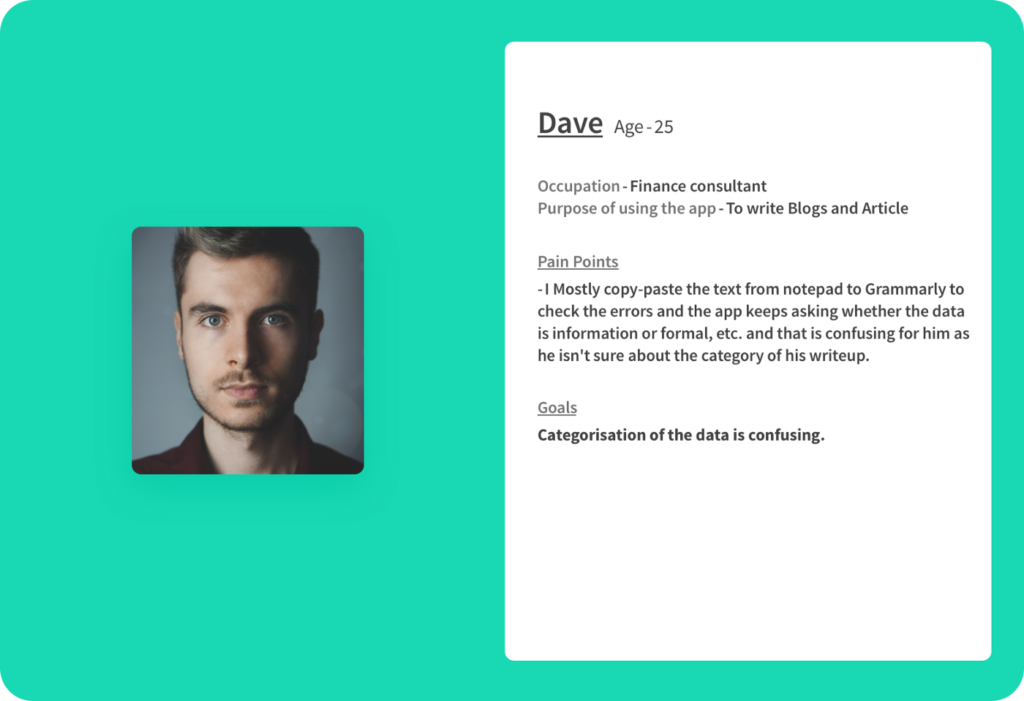
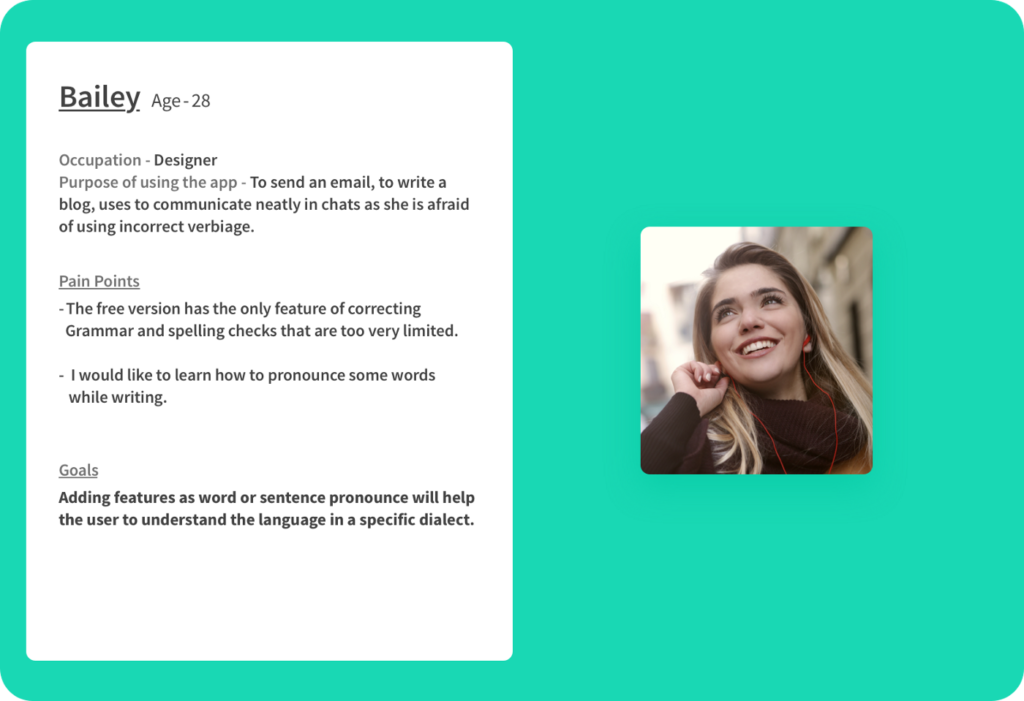
Your company’s first step in defining end-user success is understanding your user's frustrations, pain points, and key objectives. How do your product and processes make your users feel?
Are they delighted or frustrated? Maybe both at times?
I've learned that people will forget what you said, people will forget what you did, but people will never forget how you made them feel.
Maya Angelou
With these user personas and their pain points in mind, the study's author, Apoorva Kshirsagar, created an empathy map to visualize their needs.
By mapping out the user's pain points, Grammarly can understand what they can do to support and anticipate the needs of their users better. Or how to build the product more around their user's needs.
So how many users should you interview?
Interview until you start hearing the same things over and over again… then start writing those down.
Here are the six key elements for each interview that will bring home data for actionable change:
- What is the struggle that makes them seek a solution?
- What were the motivations?
- What driving forces or emotions prompted them to find a solution?
- What was the perceived value that made them upgrade?
- Has the experienced value solved their problem? If so, how?
- What solutions are available to consider?
All team members should be able to identify the key steps in end-user success. Then use these key steps as a base for your product roadmap.
- Why are they using the product?
- How are they benefiting from your product?
- Why can't they live without it?
This should be the core of everything you do.
Step Four: Build Momentum With Early Wins
Whether we like to admit it or not, humans are creatures of habit. At this point, you have your early adopters, you have your missionaries, but now it’s time to get buy-in from the rest of your team.
Use marketing principles and apply them to your teams to help them integrate the change into their mindset.
But how do you do that?
The psychology team at USC took a closer look at brand loyalty and the steps involved in changing human behavior and gaining buy-in for a brand or product.
The team found there are seven steps to changing human behavior:
- Interrupt the pattern: Make way for the new.
- Create Comfort: Your peers will start appreciating the shift.
- Lead The Imagination: Make the mindset the new normal.
- Shift The Feeling: Follow the feeling and convince the critical mind with results.
- Satisfy The Critical Mind: When there are doubts, ensure there are answers.
- Take Action: Cement gains through action.
- Change the Associations: Good feelings are associated with the change now.
You've interrupted the pattern at this point in the process, and now it’s time to start building a positive association with the product.
So how do we do that?
Alex Mitchell of Kin Insurance gives us two ways to locate your quick wins:
- Identify the highest leverage point in your funnel: Look at all the steps in the funnel (from acquisition to activation) and find what is most neglected or least effective today – these are high leverage points. For example, do you have a load of unnecessary fields in the signup?
- Find the lowest effort, high potential tests such as: Paying attention to neglected areas that are low effort is essential to this tactic. This is really important. Everyone can come up with testing ideas, but it's tricky to brainstorm ones with low effort and high potential. For example, what sort of emails do your users get automatically? Do you send too much or not enough? Is the copy tailored for your user base?
These two steps and your user interviews will bring insight into the quick wins and build excitement around the strategy.
Here are two tips to keep your team pumped up about the process.
Tip 1: Be Transparent
Transparency will helps teams feel involved in the process and make them feel more in control. This helps the team become invested in the buy-in of the mindset. Then when you show that a PLG mindset can work, they'll be eager to be part of creating this new company rather than just working in it.
Tip 2: Build a "Roadmap" for Your Team
Share your PLG Roadmap with your team so they can prepare for the next step. This also gives context and meaning to current projects and helps them see their role in the process.
Even if you’re still trying to figure out your next move, give your team at least three objectives in the pipeline and a timeline for execution.
These small wins help build excitement for the next step in the journey and help reinforce that these wins are not just flukes but part of the strategy.
Step Five: Experiment, Learn, Repeat
Quick experiments can help you get wins and build buy-in from C-Suite around the product-led strategy, in addition to giving businesses more insight into their user base. Therefore, experimentation is a vital piece of the product-led strategy.
Justin Dignelli, CEO & Co-Founder of Pace, shared three experiments they ran at MongoDB to gather data for quick wins.
- Piloted a “sales assist” motion where they experimented with focusing front-line reps on conversion and adoption metrics, not on onboarding meetings.
- Tested out using product usage data when reaching out to self-service customers to identify areas for optimization. For example, Query latency was high, so we pointed them to a feature that could address that.
- Tried out more product-focused signup pages that previewed the onboarding experience before the user entered any info.
Everything that touches your user – whether it's changing an existing feature, adding something new, or taking away something old – should have some sort of impact on your users' lives.
Experiments provide insight into how to improve these touchpoints. For example, through experimentation, MongoDB could derive where to insert their sales to shorten their sales cycle for their enterprise users.
In the beginning, knowing where to start can be tricky. Here is a good four-step guide to identifying where to start and how to gather meaningful data through experimentation.
Task 1: Look at End-User Success
At this point, you:
- Have done the research
- Understand the problem your product solves for your user base
- Have a better idea of user pain points in your flows, processes, and product
This is where you try to solve the problems in the user research you couldn’t hash out with the “quick wins.”
Task 2: Figure out What Hypothesis You Want To Test
You can develop all sorts of hypotheses for your product – like "If I add this new feature, they'll find it more useful," or "If I change this part of the process, they'll complete their purchase faster."
But before you test them, make sure that every one of them has a clear purpose. You need to ask yourself if it aligns with what you want to learn about your customers.
For example, let's say users are complaining that they can’t find support information quickly on your website. This is where you reconsider the layout of your content and try different solutions to see which gels the best with your principal user base.
Layout Your Hypothesis With These Two Components
Specific experiments should have two elements:
- A metric: A metric is how you’ll measure the results and will help you determine if there’s an improvement-i.e., did the changes lead the user to the information faster?
- An assignment: An assignment is what caused these changes. I.e., did they see the new layout?
So, in the example above, the metric would be the time it takes a user to find certain content on your website and an assignment to verify if they had seen your new layout or not.
Task 3: Collect Data
While running your experiment, document everything to help you understand what happened - like whether they found what they're looking for faster or not. Leave nothing out, as you never know what may become valuable later.
Task 4: Make Sense of it All
Once you've collected all of this data, make sure you organize and summarize it the right way. That means creating graphs and charts that clearly show your customers' behavior over time.
When looking at the results, try to focus on patterns more than individual points, such as whether they're consistently finding features faster or not. Look for the unintended consequences.
- Did all users respond to the changes?
- Did something happen you didn’t expect?
Experiments alone won’t give you all the answers. But when combined with data, you will gain meaningful insight into how to turn the casual user into lifetime champions of your product.
Experiments With Hypercontext
You know how in theory, everything sounds good, but when used in practical application, it heads South?
Below is an example that demonstrates the real-world application of this step using our four-step guide.
Hypercontext is a meeting management tool, and they shared with ProductLed experiments that helped them drive conversions.
I’ve outlined what they did for each of the four abovementioned tasks.
Step 1: End-User Success: Research shows our users find our Premium Product valuable. But we aren’t sure how valuable.
Step 2: Hypothesis (Metric & Assignment): If users try our Premium Product first, they are more likely to upgrade than downgrade.
- The metric is conversion.
- The assignment is experiencing the Premium Product before the Freemium Product.
Step 3: Collect Data: Hypercontext started offering new users a free, gifted, premium trial, and the number of premium trials increased. They followed these users during their premium trial throughout the experiment and documented everything.
Step 4: Make Sense of It All: Users who hadn't experienced the product without premium features were driven by fear to convert.
The fear of losing access to the best parts of the product proved to be a stronger driver than desire.
From this experiment, Hypercontext learned that users should access their product's greatest features upfront.
Check out nine other experiments that helped Hypercontext drive PLG conversions.
Step Six: Scale Up Your Operations
The biggest takeaway from experimentation is figuring out what works. Once you do that, you can pour gasoline on the fire and start scaling out your operation.
If you’re serious about scaling, consider our ProductLed training program. An actionable course followed by mentoring throughout the year to stay on track and find success. Learn more here.
Here are five ways to scale a product-led company:
1: Measure the Right Metrics
Set up analytics/metrics to help you understand which activities drive your engagement and retention. Product-led growth companies have a different set of metrics than traditional sales-led companies that focus on outcomes instead of outputs.
Here are the two product-led growth metrics PLG leaders need to wrap their heads around.
Product-Qualified Leads (PQLs)
Focus on Product-Qualified Leads (PQLs) instead of Marketing-Qualified Leads (MQLs). Defining PQLs has helped top companies solidify the “Aha!” moment in the product.
For example:
- For Slack, a PQL is when an account reaches its 2,000 message limit.
- For Facebook, a PQL is once someone adds seven friends.
When users hit these milestones, they’ve found meaningful value in the product. That's a metric that brings insight into what moves the needle.
Value Metrics
Your PQLs will reveal your value metrics. Value metrics help you understand the value your product brings to your users.
As this is a new concept, there can be uncertainty when identifying the proper value metric.
Three key indicators your value metric are good are:
- It’s easy for the user to understand.
- It’s aligned with the value the user receives in the product.
- It grows with your customer's usage of that value.
If you’re still feeling unsure, check out this article to learn how to find and stress test your value metrics to find the best ones for your company and product.
Once you know these, scale them by getting team members to perform the most popular activities.
2: Document the Process
As you shift to a more product-led strategy, identify movements that bring success and see how you can leverage them.
For example, Dooly identified key moments of truth for their new users while they went through their product. Then they connected members of their sales team with the new users as they hit the milestones to show them the value of their product quicker.
Through measurement and ongoing observation of how users interact with Dooly, they discovered their PQLs were users who hit the “sync” button within their app. And once five or more users within the same organization become PQLs, a salesperson is automatically notified to offer onboarding support.
Dooly noticed that by bringing in Sales earlier in the process, they could help new users solve real-world circumstances and help them experience the value quicker. Once new users experienced the value, conversions increased.
So by documenting everything, Dooly could pinpoint when and how sales should swoop in and support a new user or team to help them experience the value of their product.
3: Invest in the Right Tools
As you scale, investing in tools can help your team navigate the organization is important. Within a product-led company, you’ll want to find tools that help you draw out the full potential of your product data to grow your business.
Here are a few of the tools you can look into to start building your tech stack:
- Customer data platform: This is where you capture customer information through product signups and usage data and send the valuable information to your other tools to be analyzed and segmented.
- Marketing automation platform: Your marketing automation platform is where your campaigns live. This is where you build your email drips, lead capture forms, webinars, and so much more.
- CRM: The CRM is where your go-to-market team lives. It becomes the source of truth for your sales team.
- Data enrichment tool: This tool helps you get to know your leads better by pulling from additional sources to give you a much fuller profile. Since you’ll be collecting a lot of emails, it will be helpful to dive deeper into your contacts to understand who is a high-value lead.
- Data warehouse: The data warehouse should be the source of truth for your product data. It should have logs of each trial signup and customer, as well as the organizations they're linked with, and rich product usage data at a minimum.
The beautiful part is that most of the tools for product-led growth are product-led companies, so you can experience which one fits your company’s needs before committing.
Check out the available tools in our ultimate product-led growth tech stack.
4: Diversify the Leadership Team
Beyond building a new generation of leaders with stronger ties to the product,look for leadership that will challenge the status quo and brings diverse perspectives to the application and execution of your overall strategy.
For instance, engineers and developers will have a better idea of timelines for website projects and new website functions than someone from marketing. And a marketer will have more insight into what will attract and convert and can communicate that to the engineers and developers.
When I asked Wes Bush what the ideal skeleton crew looks like, he said four leaders working together produce timely results.
Ideally, your team will be compromised of:
- Founder/ Initiator/ Driver/ Product Manager: Someone who can organize, delegate, communicate, and keep the motion flowing.
- Growth Marketer: To test things out and change up the messaging.
- Front-End Developer: Get someone scrappy that has done support before, can ship quickly and isn't a perfectionist.
- Product Designer: Someone that understands how to design the new product experience and be the advocate of the user journey...which will be laid out in the cohort.
With proper leadership, you can lead quick experiments, monitor results, and get the team the resources they need to quickly and efficiently improve their process until you have your key user based dialed and flowing in.
Ask yourself if you can fail efficiently with your chosen team.
Your team should have enough of a diversified skill set to bring a clear understanding to the C-Suite and other departments of where the company is in the journey, what’s in the pipeline, and what you have achieved.
Check out how Enzuzo formed a dream team that allowed them to be quick and agile.
5: Make the PLG Mindset a Priority
You can follow most of these steps, but if a business doesn’t put the product-led culture first, it will be impossible to fully optimizable PLG success.
Ben Winters from Waldo put it brilliantly:
I see a lot of companies trying to implement a PLG motion, but they are forgetting the most important component of being product-led. To get the most from a PLG motion, you must have a product-led culture first.
Having the following does NOT mean you are product-led:
1. You have a free trial or a freemium funnel
2. Buyers don’t have to go through a sales process anymore
3. You use a PQL model to score leads
If you want to be product-led, you need to:
1. Obsess about user experience
2. Truly understand your customers and the problem you are solving
3. Refuse to change your product vision for a big customer
4. Over-invest in product development
For all the companies that want a PLG motion, make sure you are product-led first, and the PLG motion you implement will be 100x more impactful.
Yeah…what Ben said…
Mixpanel: How they did it
The team at Mixpanel was able to usher in a vision of product-led growth by articulating the value of PLG to each department.
Understanding the values and benefits of switching over to PLG is one thing, but contextualizing it for each department is another.
Mixpanel’s PLG approach to new business looks like this:
In the image above, Mixpanel shows its user journey.
From the data and analytics perspective, Mixpanel needed to track:
- Usage caps, milestones, requests to talk sales, and when there’s an interest surge from an account.
- Collect data and analyze how users progress through each part of the diagram to learn how to optimize each step. This helped them become more and more efficient in leading potential customers to the value of their product.
The sales and marketing data for a PLG can be achieved with a mix of data warehouses (check out our ultimate tech stack list) to streamline data into a program to analyze it and then move the data out to the appropriate teams.
For Mixpanel, the flow looked like this.
This allowed Mixpanel to get a clear understanding of its user segments and their behaviors. It also empowered their teams to do self-serve analysis on:
- How their work affects paid conversions.
- Spotting problems and opportunities quickly and efficiently.
Wrapping it up
Most thought leaders behind a company’s product-led movement tend to focus on actions within their current systems. And while for some companies, it’s the only way to start. It’s vital to consider the behavioral and cultural overhaul that needs to happen from the top down before anything else.
- Analyze the cultural shifts within your organization that need to take place.
- Gather your early adopters and missionaries.
- Assemble a diverse, result-driven team.
- Redefine with leadership what success looks like.
Make end-user success the driving force behind every move you make.
- Define end-user success for your product.
- Gain trust and confidence with C-Suite with early wins using resources on hand.
- These early wins will help drive momentum (and resources) for experiments to learn and grow.
- Then use the wins from your experiments to scale.
Starting is scary, and it doesn’t happen overnight. Luckily you have a whole community of PLG leaders to draw from.

